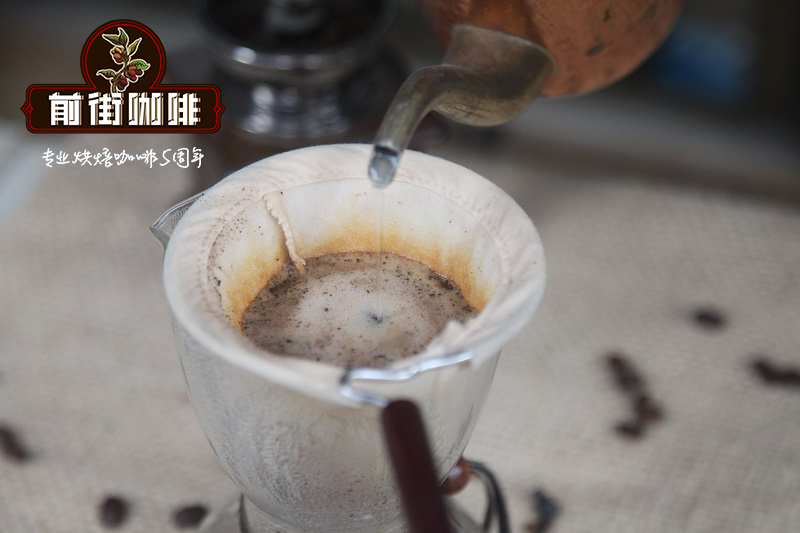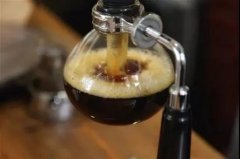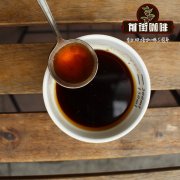What is Blue Mountain Coffee? Taste and flavor characteristics of Jamaican Blue Mountain Coffee suggestion for brewing Blue Mountain Coffee

Professional coffee knowledge exchange more coffee bean information please follow the coffee workshop (Wechat official account cafe_style)
Blue Mountain Coffee is the best coffee in the world. The Blue Mountains are located in eastern Jamaica, hence the name because the mountain is surrounded by the Caribbean Sea. On clear days, the sun shines directly on the blue sea, and the peaks reflect the bright blue light of the sea.
The highest peak of the Blue Mountains, which is 2256 meters above sea level, is the highest peak in the Caribbean and a famous tourist attraction. Located in the coffee belt, with fertile volcanic soil, fresh air, no pollution, humid climate, foggy and rainy all the year round, this climate has created the world-famous Jamaican Blue Mountain Coffee and the highest price coffee in the world.
Blue Mountain Coffee has the characteristics of all good coffee, not only full-bodied and mellow, but also because of the perfect combination of sweet, sour and bitter coffee, it has no bitter taste at all, only a moderate and perfect sour taste. It is generally drunk on a single product, but because the output is very small and the price is extremely expensive, it is generally made with coffee with a similar taste on the market.
The "secret" of why Blue Mountain coffee tastes pure: their coffee trees are all on rugged hillsides, and the picking process is so difficult that non-local skilled women are simply unable to do it. It is very important to choose the right ripe coffee beans when picking. Immaturity or ripeness will affect the quality of the coffee. The picked coffee beans are shelled on the same day, and then let them ferment for 18 hours. After that, the coffee beans were cleaned and screened. After that, the drying process must be carried out on the cement floor or on a thick blanket until the humidity of the coffee beans drops to 12%-14%. And then store it in a special warehouse. Take it out and roast when needed, then grind it into powder. These procedures must be strictly mastered, otherwise, the quality of coffee will be affected.
There are three grades of coffee in the Blue Mountains of Jamaica:
Blue Mountain Coffee (Blue Mountain Coffee)
Alpine coffee (Jamaica High Mountasin Supreme Coffee Beans)
Jamaica Coffee (Jamaica Prime Coffee Beans)
Among them, Blue Mountain Coffee and Alpine Coffee are each divided into two grades. In terms of quality, the order from top to bottom is: blue Mountain 1, Blue Mountain 2, Gaoshan 1, Gaoshan 2, Jamaican Coffee.
Coffee grown between 457m and 1524 m above sea level is usually called Blue Mountain Coffee.
Coffee grown between 274m and 457m above sea level is often called Jamaica Prime Coffee Beans, and the price of blue mountain coffee is several times higher than that of alpine coffee.
In the stage of raw bean treatment of Lanshan coffee, only ripe red fruit is harvested, and manual selection and the elimination procedure of floating fruit are the basic conditions. Then, the farmers sent the selected coffee cherries to another washing station for the second selection, and carried out the flesh removal action before the evening. The coffee beans are then placed in a large sink and any overfermented, unripe or worm-eaten cherries are carefully screened before pectin removal. After the pectin is removed, the shell beans are placed on the cement slate and dried in the sun for 5 days, then bagged and stored for at least 10 weeks. Finally, after shelling the raw beans, the last hand-selected procedure will be carried out to remove the turnips and save the turnips.
Jamaican coffee beans have a long history. In 1728, the then British Governor Nicholas Lowe Sir Nicholas Lawes imported coffee from French Martinique Island to Jamaica. Because the local climate was very suitable for growing coffee beans, Jamaica exported 83000 pounds of high-quality coffee nine years after its introduction. The Blue Mountain Coffee producing area is located in the east of Jamaica. Only those growing in this area at an altitude of 3000 feet to 5500 feet are authentic [Jamaican Blue Mountain Coffee] (Jamaica Blue Mountain), while others growing at an altitude of 1500 to 3000 feet can only be called [Jamaican Alpine Coffee] (Jamaica High Mountain). Coffee grown below 1500 feet above sea level is [Jamaica's preferred coffee beans] (Jamaica Supreme) or [Jamaican low-altitude coffee beans] (Jamaica Low Mountain). Coffee is not allowed in conservation forests above 5500 feet.
The serious efforts made by the Government of Jamaica were mainly to increase coffee production and to build a central coffee processing plant to facilitate coffee treatment and raw bean grading, which did improve the quality but not very successfully. Canada, the largest buyer of Jamaican coffee in 1943, still could not accept this quality. In 1944, the Jamaican government set up a central coffee [water] treatment plant, where all coffee to be exported had to be processed and graded. The Jamaican Coffee Authority was established in June 1950 and the state is officially responsible for the quality of coffee beans for export. There are currently five government-certified 100% Blue Mountain Coffee processing plants: Wallenford,Mavis Bank,Old Tavern Old Inn, Silver Hill,Moy Hall.
Blue Mountain Coffee is a high-quality Caribbean coffee, which, like other countries, has been damaged by natural hurricanes. I have seen too many damaged bean cups and the taste of kale. Prices are always affected or even unmarketable in years hit by hurricanes. In addition, the hot and humid environment of island countries often makes coffee moth-eaten or white spots, and coffee beans with real zero defects are always rare. In addition, the Japanese purchase of 70% of the Blue Mountain Coffee makes the price high. The real high-altitude 100% pure Blue Mountain coffee is produced by the Jamaican national processing plant. The coffee is packed in a special barrel and there is a certificate on each barrel.
RSW Blue Mountain Coffee is composed of three local coffee estates Resource, Sherwood Forest, and Whitfield Hall in the Blue Mountain region of Jamaica. It is the most stable and best quality of Blue Mountain Coffee. Each manor has a history of more than 1800 years. The owner of the Blue Mountain Coffee worked together to create a legend of barreled Blue Mountain Manor brand coffee a few years later. RSW only deals with coffee produced by its own manor group and will never buy beans from other estates. They mainly use the Sherwood Coffee processing Plant (built before 1800) as their exclusive processing plant, where coffee cherries from the three estates are sent for processing, and the freshly harvested coffee cherries are placed in a humidity-controlled storeroom, with great care in every detail of the process, so that they can provide buyers with the best Blue Mountain coffee.
The Blue Mountain Coffee of Qianjie Coffee is from Clifton Manor and is recommended to be brewed at 88 ℃ water temperature. you can choose a KONO filter cup with a medium grinding degree and a time limit of less than two minutes. Attractive dark chocolate, nutty flavors and black sugar taste. The perfect integration of sour, sweet, sweet and bitter makes people have endless aftertaste.
Important Notice :
前街咖啡 FrontStreet Coffee has moved to new addredd:
FrontStreet Coffee Address: 315,Donghua East Road,GuangZhou
Tel:020 38364473
- Prev

What's the difference between hand-brewed coffee and siphon pot coffee? The siphon pot can make coffee with high alcohol thickness.
Professional coffee knowledge exchange more coffee bean information Please follow the coffee workshop (Wechat official account cafe_style) what is the difference between hand-brewed coffee and siphon pot coffee? Can the siphon pot make coffee with high alcohol thickness? Coffee novices who like to use siphon pots must be looking forward to the cleaning tips of siphon pots. Then keep reading. Siphon brewed coffee is
- Next

What is the difference between Blue Mountain Coffee and Blue Mountain Coffee? The taste of Blue Mountain Coffee
Professional coffee knowledge exchange more coffee bean information please follow the coffee workshop (Wechat official account cafe_style) Jamaican coffee beans have a long history. In 1728 the then British Governor Nicholas Lowe Sir Nicholas Lawes imported coffee from French Martinique Island to Jamaica. As the local climate is very suitable for growing coffee beans, buy it after nine years of introduction.
Related
- Detailed explanation of Jadeite planting Land in Panamanian Jadeite Manor introduction to the grading system of Jadeite competitive bidding, Red bid, Green bid and Rose Summer
- Story of Coffee planting in Brenka region of Costa Rica Stonehenge Manor anaerobic heavy honey treatment of flavor mouth
- What's on the barrel of Blue Mountain Coffee beans?
- Can American coffee also pull flowers? How to use hot American style to pull out a good-looking pattern?
- Can you make a cold extract with coffee beans? What is the right proportion for cold-extracted coffee formula?
- Indonesian PWN Gold Mandrine Coffee Origin Features Flavor How to Chong? Mandolin coffee is American.
- A brief introduction to the flavor characteristics of Brazilian yellow bourbon coffee beans
- What is the effect of different water quality on the flavor of cold-extracted coffee? What kind of water is best for brewing coffee?
- Why do you think of Rose Summer whenever you mention Panamanian coffee?
- Introduction to the characteristics of authentic blue mountain coffee bean producing areas? What is the CIB Coffee Authority in Jamaica?

